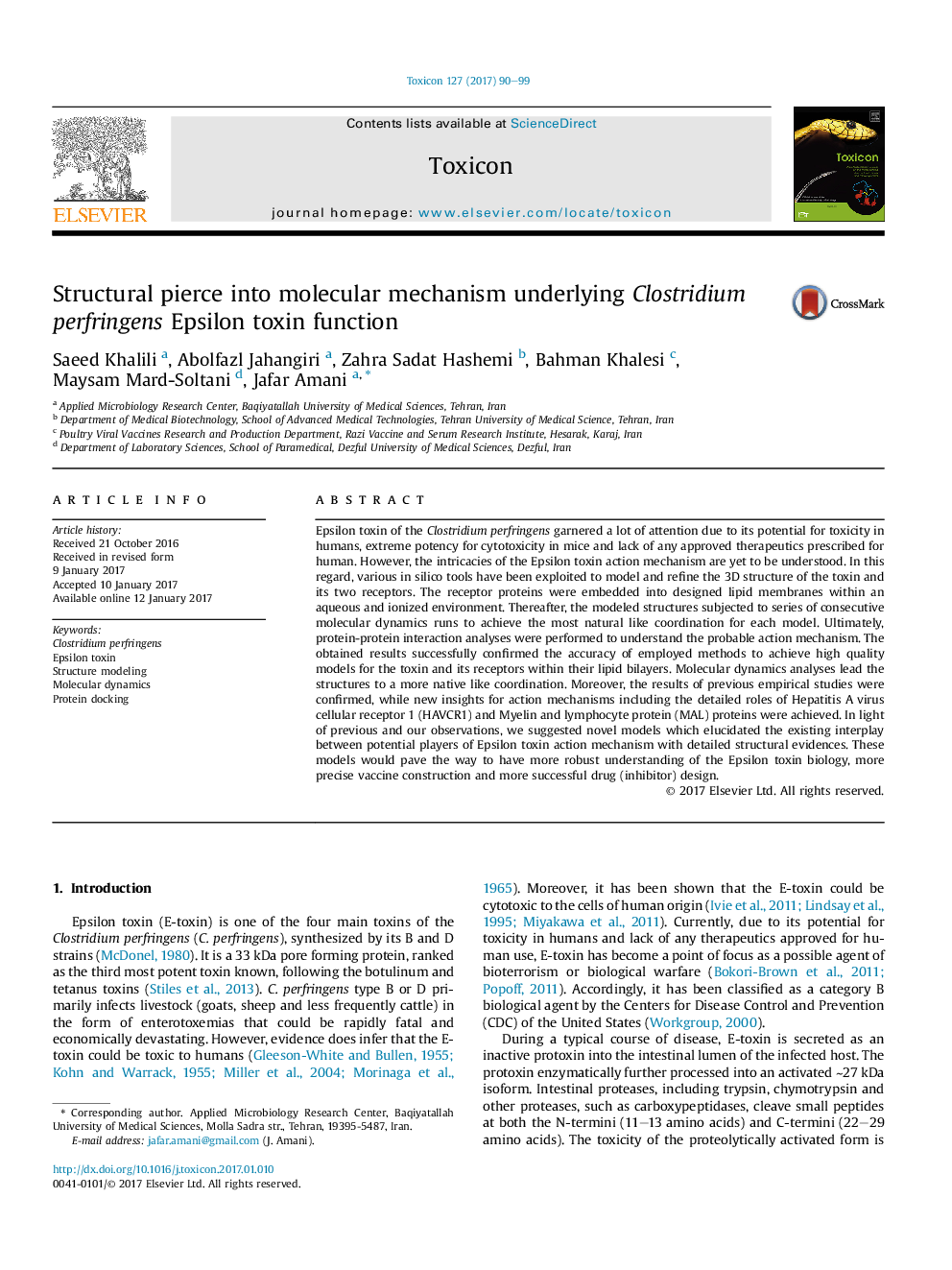| کد مقاله | کد نشریه | سال انتشار | مقاله انگلیسی | نسخه تمام متن |
|---|---|---|---|---|
| 5519614 | 1544109 | 2017 | 10 صفحه PDF | دانلود رایگان |

- MAL and HAVCR1 are the key receptors of the E-toxin.
- E-toxin could convey its function through 3 possible models.
- MAL seems to be the key receptor which influences the fate of the toxin action mechanism.
- MAL could guide the toxin through a prepore stage or even independent from a pore.
Epsilon toxin of the Clostridium perfringens garnered a lot of attention due to its potential for toxicity in humans, extreme potency for cytotoxicity in mice and lack of any approved therapeutics prescribed for human. However, the intricacies of the Epsilon toxin action mechanism are yet to be understood. In this regard, various in silico tools have been exploited to model and refine the 3D structure of the toxin and its two receptors. The receptor proteins were embedded into designed lipid membranes within an aqueous and ionized environment. Thereafter, the modeled structures subjected to series of consecutive molecular dynamics runs to achieve the most natural like coordination for each model. Ultimately, protein-protein interaction analyses were performed to understand the probable action mechanism. The obtained results successfully confirmed the accuracy of employed methods to achieve high quality models for the toxin and its receptors within their lipid bilayers. Molecular dynamics analyses lead the structures to a more native like coordination. Moreover, the results of previous empirical studies were confirmed, while new insights for action mechanisms including the detailed roles of Hepatitis A virus cellular receptor 1 (HAVCR1) and Myelin and lymphocyte protein (MAL) proteins were achieved. In light of previous and our observations, we suggested novel models which elucidated the existing interplay between potential players of Epsilon toxin action mechanism with detailed structural evidences. These models would pave the way to have more robust understanding of the Epsilon toxin biology, more precise vaccine construction and more successful drug (inhibitor) design.
Journal: Toxicon - Volume 127, 1 March 2017, Pages 90-99